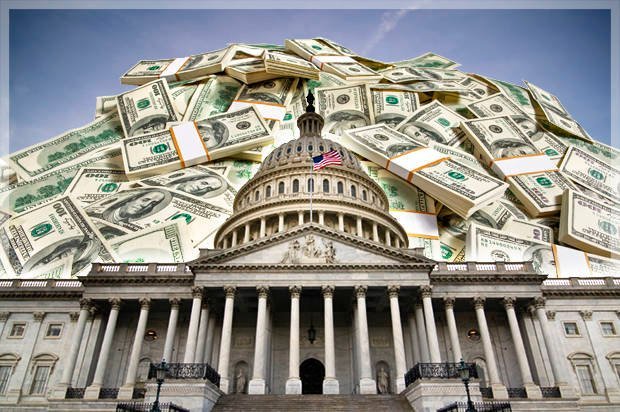
Antony Davies and James R. Harrigan
Candidate Donald Trump said last March that he would eliminate the federal debt in eight years. This would be possible, he said, by renegotiating trade deals. He never actually explained how more favorable trade deals would fill government coffers, but he didn’t really have to. This was a campaign promise he never had any intention of keeping.
How do we know? A little more than a year later his budget director, Mick Mulvaney, said so. Speaking to CNBC’s John Harwood, Mulvaney said of Trump’s pledge, “It’s fairly safe to assume that was hyperbole.” Leaving little doubt as to the facts of the matter, he continued, “I’m not going to be able to pay off $20 trillion worth of debt in four years. I’d be being dishonest with you if I said I could.”
It was just a few months later that President Trump cut a deal with congressional Democrats to increase the federal debt limit yet again - the 80th time the debt ceiling has been raised since 1960.
Sadly, there is nothing surprising about a lying candidate, an equivocating President, or a Congress that allows the debt to grow out of hand at every turn. There is, though, something very unusual about the United States debt that deserves some sort of explanation.
According to Treasury Department figures, the federal debt did not change from March 19th through September of this year, holding absolutely steady at $19.8 trillion plus or minus some change. Not only is that odd; it is impossible. The government routinely spends more than it brings in, and has done so for decades. The last time the United States government operated at a surplus was during the Eisenhower administration. President Clinton claimed a surplus during his tenure, but that claim rested on an accounting gimmick wherein the federal government counted money it borrowed from the Social Security Trust Fund as tax revenue.
So how did the debt level not increase for six months? A look through recent history provides a clue.
The debt has flat-lined like this at least three times before. From March through August 2011, at $14.3 trillion, from the end of May to mid-October 2013 at $16.7 trillion, and from late February until November of 2015 at $18.2 trillion. Each of these periods of quiescence started when the government hit the debt ceiling, and continued until Congress raised it. One would think that when the government hits the debt ceiling it stops borrowing. What it actually does is to fudge the accounting.
When Congress raised the ceiling in August 2011, the federal debt jumped almost 1.7 percent in a single day - more than 40 times the average daily growth over the previous year. When it raised the ceiling in October 2013, the debt jumped 2 percent in one day. And when Congress raised the ceiling in November 2015, the debt jumped 2.1 percent over forty-eight hours. That jump was 130 times the average daily growth prior to hitting the debt ceiling. The government hadn’t stopped borrowing when it hit the ceiling. It simply hid its borrowing. If history is any guide, we can expect the federal debt to jump by more than $400 billion immediately following the latest debt ceiling boost. That’s how much uncounted debt the government has accumulated since it hit the ceiling back in March.
We’ve always known that the debt ceiling is political theater, but this is the proof. Arguing over how much debt politicians should allow themselves to accumulate is no way to control spending or address our massive debt problem. The only thing that will solve this problem is a constitutional amendment that forbids, in no uncertain terms, any deficit spending. Without it, all we will get are empty promises and accounting gimmicks.
Antony Davies is associate professor of economics at Duquesne University. James R. Harrigan is CEO of FreedomTrust.
This article first appeared in InsideSources.
I didn't realize you were on steemit! This is Stephanie Herman from Facebook (geke venns, Cost Benefit Jr) - I'm so happy you're blogging here! I'll do what I can to promote your posts.
Hi! I am a robot. I just upvoted you! I found similar content that readers might be interested in:
https://www.insidesources.com/truth-behind-government-debt/
For any of my friends and followers, I'd appreciate you reading through Mr. Davies articles and consider subscribing and/or upvoting. He is the real deal and much more eloquent than I am.